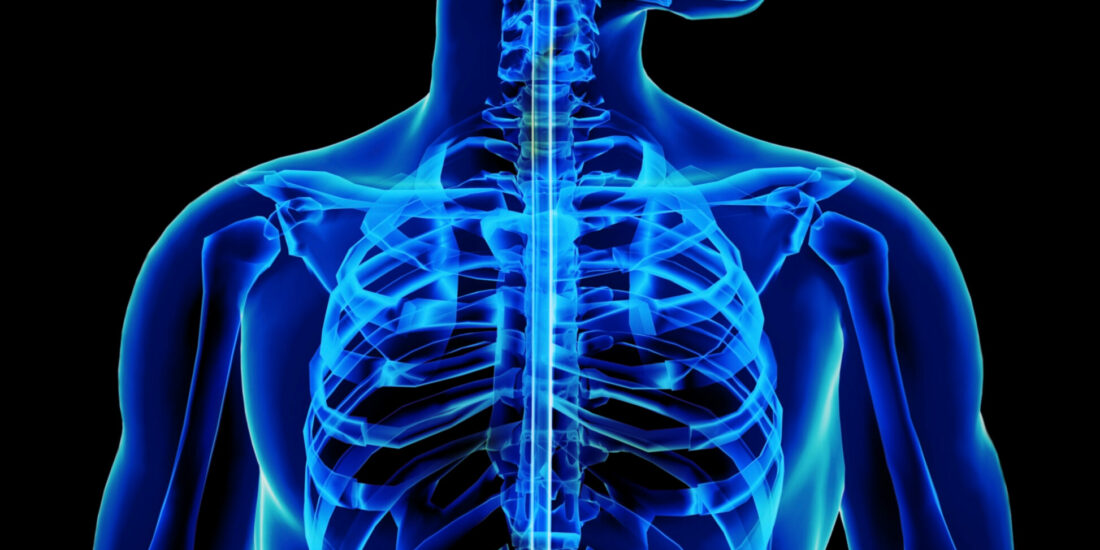Examination of the Novel Sigma-1 Receptor Antagonist, SI 1/28, for Antinociceptive and Anti-allodynic Efficacy against Multiple Types of Nociception with Fewer Liabilities of Use
By Lisa L. Wilson, Shainnel O. Eans, Insitar Ramadan-Siraj, Maria N. Modica, Giuseppe Romeo, Sebastiano Intagliata,and Jay P. McLaughlin Excerpt from the article published in International Journal of Molecular Sciences 23, no. 2: 615. Published: 6 January 2022, DOI: https://doi.org/10.3390/ijms23020615 Editor’s Highlights Chronic neuropathic pain is a common cause of decreased quality of life and disability […]
Continue ReadingThe Sigma-1 Receptor and the HINT1 Protein Control Alpha2Delta-1 Binding to Glutamate NMDA Receptors: Implications in Neuropathic Pain
by Rodríguez-Muñoz M, Cortés-Montero E, Onetti Y, Sánchez-Blázquez P, Garzón-Niño J. Excerpt from the article published in Biomolecules. 2021 Nov 12;11(11):1681. doi: 10.3390/biom11111681. PMID: 34827679; PMCID: PMC8615847. Editor’s Highlights Abstract Nerve injury produces neuropathic pain through the binding of α2δ1 proteins to glutamate N-methyl-D-aspartate receptors (NMDARs). Notably, mice with a targeted deletion of the sigma 1 […]
Continue ReadingTargeting strategies for oxaliplatin-induced peripheral neuropathy: clinical syndrome, molecular basis, and drug development
By Yang Yang, Bing Zhao, Xuejiao Gao, Jinbing Sun, Juan Ye, Jun Li, and Peng Cao Excerpt from the article published in Journal of Experimental & Clinical Cancer Research volume 40, Article number: 331 (2021), Published: 22 October 2021, DOI: https://doi.org/10.1186/s13046-021-02141-z Editor’s Highlights Chemotherapy-induced peripheral neuropathy (CIPN) is a serious clinical problem caused by cytotoxic drugs that cause different pathologic insults to […]
Continue ReadingIntrathecal interleukin-1β decreases sigma-1 receptor expression in spinal astrocytes in a murine model of neuropathic pain
By Sheu-Ran Choi, Ho Jae Han, Alvin J. Beitz, and Jang-Hern Lee Excerpt from the article published in Biomedicine & Pharmacotherapy, Volume 144, December 2021, 112272, ISSN 0753-3322, published online October 1, 2021, DOI: https://doi.org/10.1016/j.biopha.2021.112272. Editor’s Highlights Autors’ Highlights Abstract The sigma-1 receptor (Sig-1R) plays an important role in spinal pain transmission by increasing phosphorylation of the N-methyl-D-aspartate […]
Continue ReadingBifunctional μ opioid and σ1 receptor ligands as novel analgesics with reduced side effects
By Tao Zhuang, Jiaying Xiong, Shuaishuai Hao, Wei Du, Zhenming Liu, Bifeng Liu, Guisen Zhang, and Yin Chen Introduction to the article published in European Journal of Medicinal Chemistry, Volume 223, 2021. Doi: https://doi.org/10.1016/j.ejmech.2021.113658 Editor’s Highlights Pain is undoubtedly both a major clinical and economic problem, affecting approximately 20% of the adult population worldwide. There […]
Continue ReadingNociceptive TRP Channels and Sex Steroids
By Óscar Enciso-Pablo, Karina Angélica Méndez-Reséndiz, Tamara Rosenbaum, and Sara Luz Morales-Lázaro Excerpt from the article published in Reproductive Hormones, edited by Courtney Marsh. London: IntechOpen, March 24th, 2021. DOI: 10.5772/intechopen.95552 Editor’s Highlights Several experiments made in pain animal models have demonstrated the existence of sexual dimorphism in response to pain. Rats from a diabetic […]
Continue ReadingGenomic Action of Sigma-1 Receptor Chaperone Relates to Neuropathic Pain
By Shao-Ming Wang, Nino Goguadze, Yuriko Kimura, Yuko Yasui, Bin Pan, Tzu-Yun Wang, Yoki Nakamura, Yu-Ting Lin, Quinn H. Hogan, Katherine L. Wilson, Tsung-Ping Su, and Hsiang-en Wu Excerpt from the article published in Molecular Neurobiology volume 58, pages 2523–2541 (2021) DOI: https://doi.org/10.1007/s12035-020-02276-8 Editor’s Highlights Neuropathic pain is one of the most debilitating forms of […]
Continue ReadingSpinal mechanisms contributing to the development of pain hypersensitivity induced by sphingolipids in the rat
By Hong Wei, Zuyue Chen, Ari Koivisto, and Antti Pertovaara Excerpt from the article published in Pharmacological Reports 73, 672–679 (2021). 03 January 2021 DOI: https://doi.org/10.1007/s43440-020-00207-x Editor’s Highlights Dysregulation of sphingolipid metabolism has been associated with pathophysiological pain conditions. Among spinal receptors that sphingolipids, including DMS, can activate is the transient receptor potential melastatin-3 channel (TRPM3). In […]
Continue ReadingCalmodulin Supports TRPA1 Channel Association with Opioid Receptors and Glutamate NMDA Receptors in the Nervous Tissue
By Elsa Cortés-Montero, María Rodríguez-Muñoz, M. Carmen Ruiz-Cantero, Enrique J. Cobos, Pilar Sánchez-Blázquez, and Javier Garzón-Niño Excerpt from the article published in International Journal of Molecular Sciences 22, no. 1: 229. Published: 28 December 2020, DOI: https://doi.org/10.3390/ijms22010229 Editor’s Highlights TRPA1 is the only mammalian member of the transient receptor potential (TRP) ankyrin channel subfamily. There is […]
Continue ReadingThe Sigma 2 receptor promotes and the Sigma 1 receptor inhibits mu-opioid receptor-mediated antinociception
By Sánchez-Blázquez, P., Cortés-Montero, E., Rodríguez-Muñoz, M. et al. Excerpt from the article published in Mol Brain 13, 150 (2020). https://doi.org/10.1186/s13041-020-00676-4 Editor’s Highlights σ2R is essential for the antinociceptive effects of exogenous and endogenous ligands of MOR but not for the antinociceptive effects of other families of G-receptors that also mediate analgesia, such as DOR, CB1R and α2AR. […]
Continue Reading









